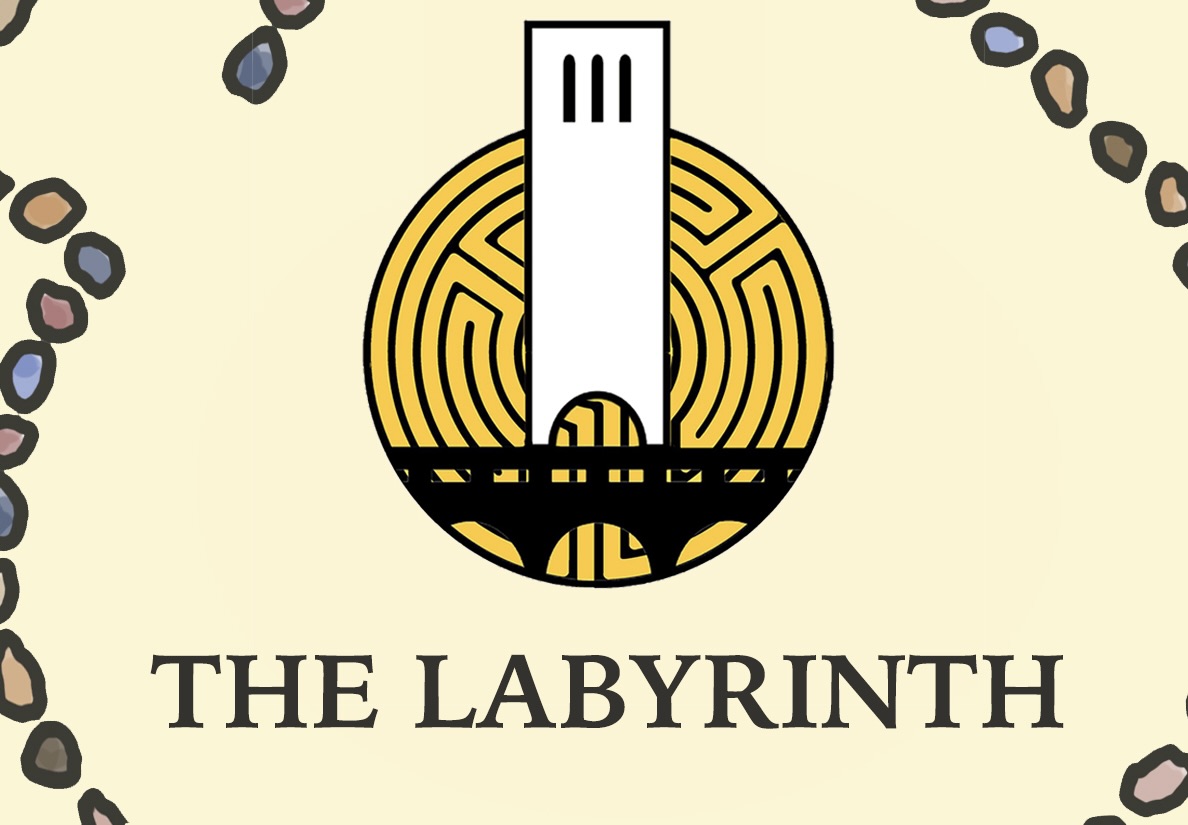Spoilers for “Cabaret” ahead
On May 10-12, UC Santa Barbara’s Shrunken Heads Production Company presented “Cabaret” at Lotte Lehmann Concert Hall. In an extremely moving and powerful staging of the famous musical, the student-run theater company showcased its stars, revealed hidden talents and left the audience with a resounding message important for the time.
Anticipation buzzed as the crowd trickled into the hall, with the musicians in the pit vamping and setting a jazzy mood. The audience members found their seats and excitement slowly filled the packed house for the 7 p.m. performance.
As the lights dimmed, a spotlight appeared on Emcee, played by third-year biochemistry major Daniel Roth, against the dark red of the stage curtains. The house erupted into cheers for the scantily clad and promiscuous host of the Kit Kat Klub, setting the excited tone for the night.
As the audience was welcomed into the world of “Cabaret,” the company performed the opening number “Willkommen” with bright and loud costumes — a sheen of campy and queer decadence that hides a darker and poignant message about fascism and hate at its core. A deeply fun romp through the main setting of the musical, “Willkommen” set the overall mood high, and the applause that drowned out the last note was a telltale sign of the stellar job Emcee and his Kit Kat Klub performers did.
A transition into the second scene of the musical — a train on its way to Berlin — introduces us to two of our main characters: Clifford Bradshaw, a struggling American novelist played by fourth-year psychological & brain sciences and economics double major Carter Chasson and Ernst Ludwig, a German smuggler portrayed by second-year economics and statistics and data science double major Joseph Nadenichek. These two actors dawned their roles with grace and very fine acting. The pair showcased complex emotions, ones that displayed deeper characteristics far surpassing the flat and one-dimensional portrayal that comes from not fully embracing a character. They took words off the page of the script and transformed them into fully realized and three-dimensional characters. The Daily Nexus even had a surprise cameo in this scene as the Science & Tech section was used as a prop by Bradshaw (thank you to Shrunken Heads for the shoutout).
As a first encounter between two strangers gives way to a friendship (if you want to call it that), subtle movements and lines delivery from Ludwig gave a first hint to the darker underbelly of the story. An invite to the Kit Kat Klub then propels the story forward as the audience is whisked away back to the nightclub culture of the Weimar Republic. The musical is set during the 1930s: the tail end of the Jazz Age and the Nazi’s rise to power in Germany. At this time, the nightclub scene was explosive, with vibrant explorations of gender, sexuality and radical liberalism, something that the ever growing Nazis found distasteful.
Bradshaw, while himself morally dubious, acts as our source of morality within the story. He is quick to point out the hatred spewed forth by the Nazi characters and the danger it puts everyone in. Yet, he is always met with indifference, as if he is blowing this situation out of proportion. Looking back, with the power of historical hindsight, it is clear how right Bradshaw was. However, the perspective shown through “Cabaret” is the realistic one, the one that encapsulates the emotions and thinking of the time. The audience is reminded how easy it is for hate and scapegoating to grasp a populous and are invited to reflect on these themes as the musical plays on, highlighting the mundanity of life as a dark and sinister evil spreads into government and the minds and hearts of its citizens. This reveal does not rear its head just yet, as the play has only showcased two scenes at this point: the Kit Kat Klub opening number and the train car. With many more scenes even before the intermission, the musical has more twists and turns before revealing the ugly truth of its story.
Before returning to the club, Fräulein Schneider and Herr Schultz are introduced to the world of the play, played by fourth-year mathematics major Atalia Zahrndt and third-year environmental studies and political science double major Joey Henschel, respectively. These two performers stole the show with their ability to convey the complex emotions and situations they found themselves going through. Schultz is Jewish and is staying at Schneider’s boarding house with Bradshaw, and the pair soon find themselves in a love that cannot be. Each heartbreaking and emotional scene was a beautiful display of acting and performing at its best. One could not wait for either of these two to come back onstage and give it their all once again.
It leaves one thinking not only about how well it was performed but also about how hate can so easily infect our lives and our culture.
As the stage transitions to the Kit Kat Klub after the scenes of normal life in Berlin, another main character is introduced, one with a smaller role than in the film adaptation, Sally Bowles, played with wonderful care by fourth-year theater major Dani Granaroli. Her performance eloquently combined storytelling into her singing. Anger and longing, mixed with a powerful sense of female independence imbued the powerful Broadway belting with a storytelling that showcased the maturity of the performer behind the role. Bowles is a performer at the Kit Kat Klub who falls in love with Bradshaw, but their romance is not perfect and many lover’s quarrels between the pair are had throughout the two acts, which exhibited more of Granaroli’s and Chasson’s excellent acting. Bowles exhibits a conflict between a desire for love and connection, for settling down and starting a family and continuing to live lavishly in the materialistic and sexually liberated world of a club performer.
Every performer of the Kit Kat Klub, from those named to members of the larger ensemble, was a powerhouse. The entire company filled the stage with such energy and eclectic fashion that it was impossible to decide who to look at during each big number. Emcee was a sight to behold as he led the rest of them throughout the musical. Roth played the Master of Ceremonies with excitement and passion. He was clearly having fun with the campy role, and his joy spilled forth from the stage into the house. Everyone loved seeing him perform and cheers and applause would fill the hall each time he gave his all or even merely entered the stage. He had the audience in a chokehold, one that was well-deserved and earned by the nature of the role and by the strength of the performer in it.
Many songs were performed with such care and love for the craft that one could feel the passion for the story being told. Two standouts happened at the end of the first act: “Married” and “Tomorrow Belongs to Me.” With Schultz and Schneider singing about getting married and their dreams, the powerhouses are at their peaks once again, carrying the story into song and truly embodying the characters as they danced and sang on stage. This passion and joy is then promptly ended in the next scene at the couple’s wedding shower, when Ludwig appears once again, this time revealing a Nazi armband and expressing his disapproval of the marriage once he finds out Schultz is Jewish. The company joins him in singing “Tomorrow Belongs to Me” as Schultz and Schneider stand in fear and silence, another display of their strong acting abilities. This haunting propagandistic song is powerful in its ubiquity within the musical. It takes over the stage and infects our beloved characters as they join in the nationalistic and hate-filled chorus. It truly is chilling, but it is only the beginning of the Kit Kat Klub’s façade cracking under the pressure of the fascist ideas right outside its doors.
Entering the second act, the orchestra, powerful and strong, kicks off with many instrumental versions of songs from “Money” to “Two Ladies” and more. It highlighted the excellent playing of the orchestra, who played each line with passion. While at times drowning the singers on stage with their powerful sound, the orchestra was quite considerate of the performers most of the time and gave them the room to explore their characters and songs while being supported by the instrumentalists. It was a strong example of the coherence in the vision for the musical that was portrayed by each and every actor, musician and production team behind the scenes.
Before the curtains close and standing in front of the cast, Emcee takes off a coat and reveals the concentration camp prisoner uniform he was hiding during the final scene. In extreme juxtaposition to the grounded beginning of the musical, this scene is abstracted and takes place in a void and in silence, a dreadful, awful silence that cries in pain as the dark realization takes hold over the audience. This musical was secretly a ticking time bomb, one that ends in an explosive reveal of the reality of hate that consumed 1930s Germany. This was not a Hollywood explosion with action stars in sunglasses walking away from the eruption of flames unscathed, but a representation of the real pain and horror that true detonations of weapons have, with all the agony, suffering, destruction and loss of life they inherently inflict. The reality is uncomfortable and it hurts to sit in the sea of pain without a liferaft to escape the turbulent waters, but without this hurt the contemplation evoked would not be as powerful.
The Shrunken Heads Production Company put on an emotionally charged and powerful performance of the classic musical “Cabaret,” which showcased the talented performers within their company and their vision for the different titles they perform. The message of “Cabaret” is powerful and just as important in today’s culture as when it first premiered. It leaves one thinking not only about how well it was performed but also about how hate can so easily infect our lives and our culture.
This appeared in the May 16 printed edition of the Daily Nexus



















US Dollar 2,000 in a Single Online Day Due to its position, the United States offers a plethora of opportunities for those seeking employment. With so many options accessible, it might be difficult to know where to start. You may choose the ideal online housekeeping strategy with the vs-70 help of this post.
Begin here>>>>>>>>>>>>>> https://becomeriches01.blogspot.com/